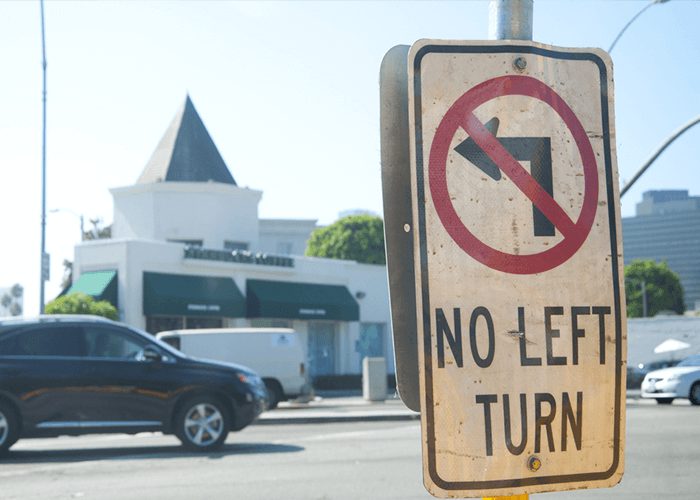Should You Turn Right To Go Left?

What if you never had to turn left?
Would you get to your destination faster? Would you be safer? Would your stress levels go down?
According to experts, the answer is almost certainly yes.
The recent Amtrak accident in Halifax North Carolina would never have happened if the truck driver didn’t have to make a difficult (and ultimately dangerous) left-hand turn onto the railroad tracks. The time it took for the driver to navigate the tough left-hand turn meant that traffic backed up behind him — making it impossible for him to get his oversized load off the tracks fast enough to prevent a collision.
Traffic engineers and drivers alike have long known about the dangers of turning left, but the Halifax accident was a dramatic illustration of the danger inherent in left-hand turns. There are are, however, other compelling reasons to turn right.
Big Benefits Associated With Mostly Right-Hand Turns
–Increased efficiency. Idling in a left-hand turn lane wastes both fuel and time. UPS was famously able to generate millions of dollars worth of savings by using route mapping software that eliminated almost all left-hand turns. Those UPS drivers were able to shave 28.5 million miles off of their routes by only turning left.
An impressive effect of the increased drive-time efficiency offered by a world of drivers who almost always turn right? All types of vehicles would spend less time on the road. This would mean less highway congestion and make it easier for commercial vehicles to navigate the roads safely
–Improved Road Safety. Simply put, turning left is more dangerous than turning right. 53.1% of crossing path accidents involve left-hand turns as opposed to 5.7% for right-hand turns. The safety issue has become so pronounced that Volvo has even created an SUV with technology specifically designed to protect drivers making left-hand turns.
–Less Stressful Driving. Researchers mapping the brain patterns of drivers have discovered that left-hand turns require far more brain power than going straight or turning right. Making matters worse, the researchers found that any type of distraction that occurs while making a demanding left turn can actually compromise the brain’s visual processing center. The stress on the brain and body caused by turning left could be dramatically reduced in a world where we simply don’t need to do so very often.
The Future of the Left-Hand Turn
Traffic engineers have experimented with ways to reduce the number of left-hand turns including superstreet traffic design and the Diverging Diamond Interchange, but there is a long way to go. While a world full of nothing but right-hand turns will probably never catch on with human drivers impatient to arrive at their destinations, many experts see promise in self-driving cars and trucks, which would not be tempted to turn left unnecessarily.
Sources:
Washington Post
Slate
Wired
New York Times
The Hamilton Spectator
Phys.org